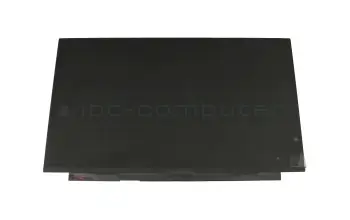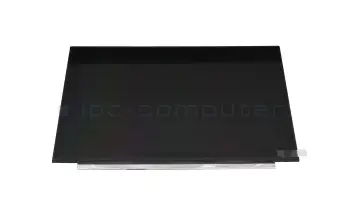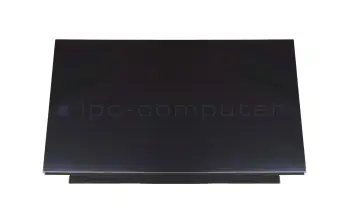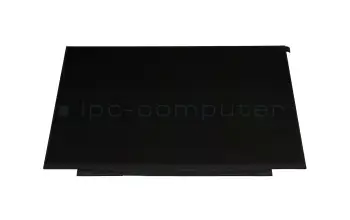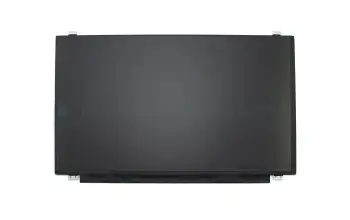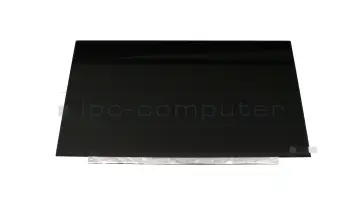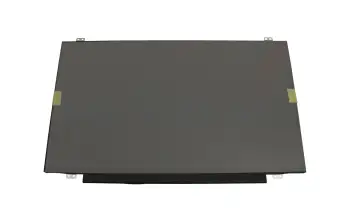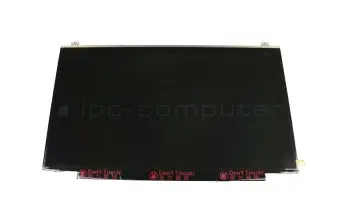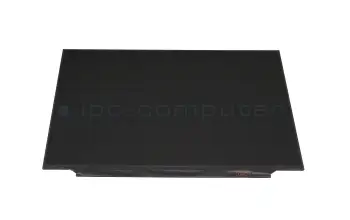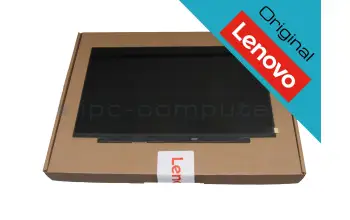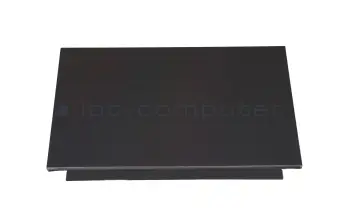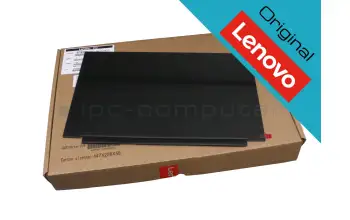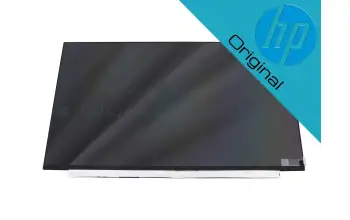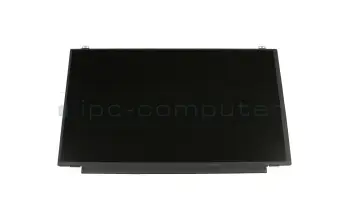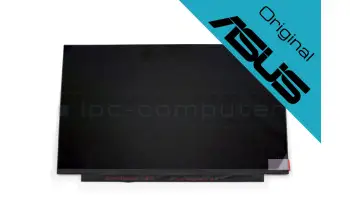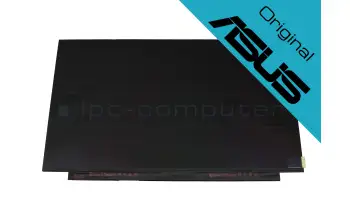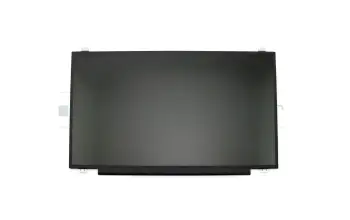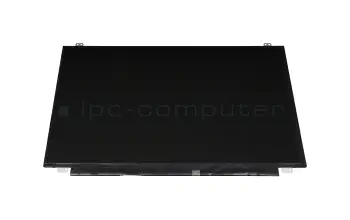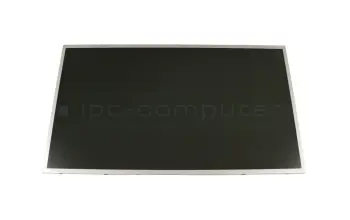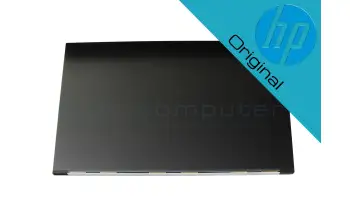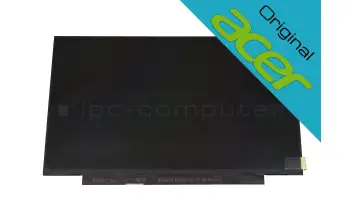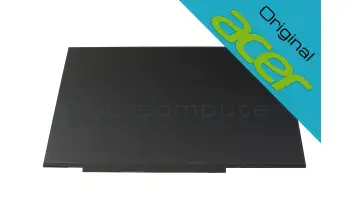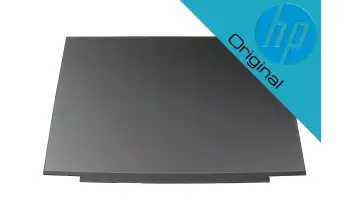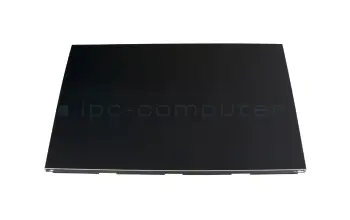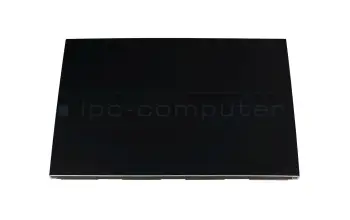Notebook/Laptop Displays
Advantages when ordering at IPC-Computer?
- We are official spare parts dealer of many notebook manufacturers, including Acer, Asus, Dell, HP, Lenovo and many more.
- Only displays of best quality from well-known manufacturers such as LG, Samsung, Chi Mei, AU Optronics, InnoLux, etc.
- Risk-free use through our quality assurance and service promise.
- Display replacement in our in-house notebook repair workshop at reasonable prices.
- Free technical support surrounding the topic of display exchange.

Find the right displays by model or features
NT156FHM-N62 V8.0 BOE IPS Display FHD matt 60Hz

plus shipping charges
Installation in our notebook repair shop
Repair flat rate display01AV671 Lenovo IPS Display FHD matt 60Hz

plus shipping charges
Installation in our notebook repair shop
Repair flat rate display04W4006 Lenovo TN Display HD matt 60Hz

plus shipping charges
Installation in our notebook repair shop
Repair flat rate displayCP802759-51 Fujitsu IPS Display FHD matt 60Hz length 315mm; width 19.5mm incl. board; Thickness 2.77mm

plus shipping charges
Installation in our notebook repair shop
Repair flat rate display18010-17340200 Asus IPS Display FHD matt 360Hz

plus shipping charges
Installation in our notebook repair shop
Repair flat rate displayLQ173M1JW04 Sharp IPS Display FHD matt 360Hz

plus shipping charges
Installation in our notebook repair shop
Repair flat rate displayB140HAN04.0 7A AU Optronics IPS Display FHD matt 60Hz length 315mm; width 19.5mm incl. board; Thickness 2.77mm

plus shipping charges
Installation in our notebook repair shop
Repair flat rate displayB140HAN04.0 H/W:7A AU Optronics IPS Display FHD matt 60Hz length 315mm; width 19.5mm incl. board; Thickness 2.77mm

plus shipping charges
Installation in our notebook repair shop
Repair flat rate display6M.RA502.004 Acer TN Display HD matt 60Hz

plus shipping charges
Installation in our notebook repair shop
Repair flat rate display5D10V82364 Lenovo IPS Display WUXGA matt 60Hz (Non-Touch)

plus shipping charges
Installation in our notebook repair shop
Repair flat rate displayWe listed some resolutions down below
| Designation | Resolution |
|---|---|
| HD (High Definition) | 1366 x 768 Pixel |
| HD+ (High Definition Plus) | 1600 x 900 Pixel |
| Full HD (Full High Definition) | 1920 x 1080 Pixel |
| QHD+ (Quad High Definition Plus) | 3200 x 1800 Pixel |
| WQHD (Wide Quad High Definition) | 2560 x 1440 Pixel |
| UHD (Ultra High Definition) | 3840 x 2160 Pixel |
Laptop Display FAQ
Here you will find all important questions and answers concerning notebook displays.
- Can I swap my notebook display myself?
With a bit of technical knowledge and a manual specific to your notebook this could be possible.
We recommend letting a specialist do it.
Here a video as an example:
- How can I find the correct Display for my Notebook?
- You can measure the diagonal of your display by measuring from one corner to the opposite one.
- If you need to you can then convert it from cm to inches or vice versa (1 inch = 2,54 cm) to get the desired measurement.
- Some sticker on the device can also contain further information about the Display.
- If you can not find any information you will have to remove the display to see its part number on the back.
- How can I measure the size of my notebook display?
You have to measure the diagonal of your display by measuring from one corner to the opposite one.
You might have to convert from cm to inches. 1 inch is 2,54 cm, so a 19" display would also be a 48cm display.
- How can I recognize a pixel error in my Display?
When manufacturing a Display there can be errors in some pixels. This will result in the pixel or sub-pixel not letting any light pass or never blocking light. If a complete pixel is defective it will either be black or white. However, the same error can also occur in a subpixel, which will then result in it always/never displaying its respective color (either red, green or blue). Due to the very high number of pixels such errors are almost impossible to avoid, and that is why displays with a few pixel errors are still shipped.
- My Display has lines
Vertical or horizontal lines are almost always a sign for a display damage.
A display damage is also indicated by lines that (dis-)appear when the display is pressed on.
In this case the display has to be exchanged.
- My Display is flickering, do I need a new one?
- In most cases a flickering of the display indicates its defect, then it will have to be swapped.
- In some cases it can be the display cable, then the display will not have to be exchanged.
- What are the differences between digitizer, display units and displays?
The digitizer is a part of the display; however, it does not display any images. Its main function is to protect the LCD underneath and it also handles touch input, if touch is present.
The LCD unit underneath the digitizer consists of the backlight and the LCD, which handles the colors of each pixel.
The display unit is all of this together. So, it contains the digitizer, LCD, backlight and usually a frame around all of it.
- What displays are compatible with my Notebook?
Only displays that are specifically made for your notebook are compatible.
- There are displays with different kinds of backlights. Either CCFL or LED lights are used only the type that is already in use will fit.
- Size and resolution also have to be identical.
- What is the difference between EDP and LVDS?
Both are methods of connecting internal displays in devices like laptops or all-in-one PCs. LVDS stands for Low Volatage Differntail signaling and only specifies, that signals are transmitted using a lower voltage than usual. This allows higher data rates due to lower crosstalk and interference. When talking about the connection of a display via LVDS, the protocol FPD-Link (Flat Panel Display Link) is usually meant, which uses LVDS. This protocol has been introduced in 1996 and has been the main way of connecting internal displays for a long time. However, with the steady increase in the resolution of displays, FPD is reaching its limits.
That is why in 2008 Embedded DisplayPort (EDP) has been introduced. It is based on the external connection DisplayPort and is constantly being refreshed. It has no problem connecting displays with a 4K resolution at over 60Hz refresh rate, whereas LVDS is over at FHD (1080p).
- What is the difference between IPS and TN?
TN, short form of Twisted Newmatic, panels have been the standard for flat-panel displays for a long time. Now they are being replaced by IPS (In-Plane-Switching) panels. The biggest disadvantage of TN panels is, that they only display a relatively small number of colours and that they have bad viewing angles. That means that if you don’t look at the panel in a 90° angel the colours quickly appear dull and distorted.
IPS displays solve these problems, they even show correct colours when looking at them almost at a 180° angle. However they still have some disadvantages compared to TN panels. They generally have a higher response time which means they take longer to display an image on screen. This is why gamers sometimes still prefer TN panels.
- What is the difference between matte and glossy displays?
The difference is in the surface of the display. A matt display has a slightly ruff surface. This greatly reduces reflections, which is very beneficial for working in rooms with bright lights or outdoors. Additionally, fingerprints and dust are not so visible.
However glossy displays also have their advantages. Due to the extremely smooth surface the picture is a bit sharper and colors and contrast are also better, provided the display beneath the coating is good enough. Professional movie and photo editing monitors often use a glossy display in combination with a large anti-glare shield for the optimal image.
- Where can I find the part number of my display?
- Which display resolutions are there?
Nowadays, there are dozens of slightly different display resolutions for laptops and monitors. In order to stay on top of things, we created an overview of the most important ones.
UHD 3840x2160 WXGA+ 1440x900 QHD+ 3200x1800 WXGA+ 1400x1050 WQHD 2560x1440 SXGA+ 1366x768 WUXGA 1920x1200 HD 1280x1024 FHD 1920x1080 SXGA 1280x800 WSXGA+ 1680x1050 WXGA 1024x768 UXGA 1600x1200 XGA 1024x600 HD+ 1600x900 - Why is my Display extremely dark?
If the Display is black, but the Desktop can still be seen a bit, this means, that the background light has died.
Some of the errors could be:
- A defective inverter or CCFL tube
- A broken cable
- The switch detecting whether the lid is open or closed could be stuck
- There could be a damage on the Mainboard.
In most cases it is probably best if you send your device in for repair to a specialist.
